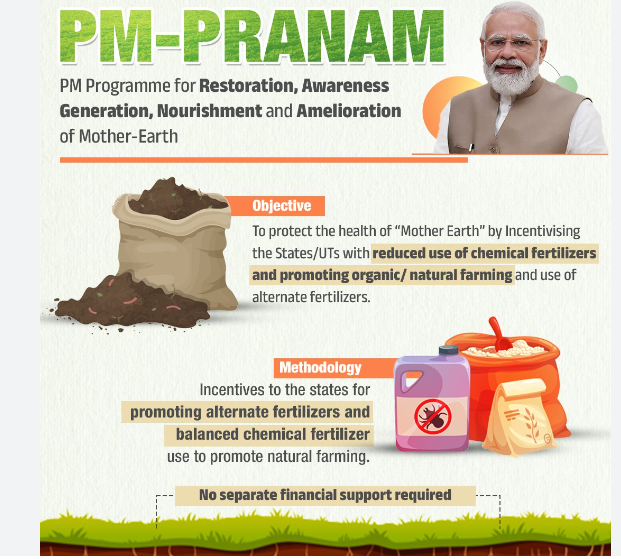31 July 2024 : PIB Summary For UPSC
1. Financial Assistance under PM-KISAN
(Source – https://pib.gov.in/PressReleseDetail.aspx?PRID=2039206 )
| Topic: GS2 – Governance – Government Policies |
| Context |
|
Analysis of the news:
- Launch and Purpose: The PM-KISAN scheme, launched in February 2019, aims to support land-holding farmers by providing financial assistance.
- Financial Benefit: Each eligible farmer receives ₹6,000 per year, distributed in three equal instalments.
- Nodal Ministry: The PM-KMY is a Central Sector Scheme administered by the Ministry of Agriculture & Farmers’ Welfare in partnership with LIC.
- Disbursement Method: Benefits are transferred directly to farmers’ bank accounts via Direct Benefit Transfer (DBT), ensuring a large-scale, efficient disbursement system.
- Coverage: Over ₹3.24 lakh crore has been disbursed to more than 11 crore farmers across 17 instalments.
- Responsibility: States/UTs are responsible for identifying and verifying eligible beneficiaries. Verified data is uploaded to the PM-KISAN portal for DBT transfers.
- Village Level Nodal Officers: These officers identify and onboard eligible farmers in their assigned villages.
- Registration Services: Farmers can register for the scheme at over 5 lakh Common Services Centers across the country, bringing registration services to their doorstep.
| Practice Question: Discuss the potential advantages of the PM-KISAN scheme for land-holding farmers in India. How does the scheme contribute to financial stability and agricultural productivity? (150 Words /10 marks) |
2. Impact of Climate Change on Farmers
(Source – https://pib.gov.in/PressReleseDetail.aspx?PRID=2039205 )
| Topic: GS3 – Agriculture |
| Context |
|
Impact of Climate Change on Indian Agriculture:
- Increased Weather Extremes: Climate change has led to more frequent and severe weather extremes, such as droughts, floods, heat waves, and cold waves, adversely affecting agricultural productivity.
- Crop and Livestock Stress: Changes in temperature and precipitation patterns stress crops and livestock, reducing yields and affecting quality. This can lead to reduced food security and income for farmers.
- Increased Vulnerability: Risk assessments show 109 districts as ‘very high’ and 201 as ‘highly’ vulnerable to climate change, indicating significant challenges for these regions in adapting to changing conditions.
- Soil Degradation: Extreme weather events contribute to soil erosion, reduced soil fertility, and increased salinity, impacting crop growth and productivity.
- Water Scarcity: Altered precipitation patterns and increased evaporation rates lead to water scarcity, affecting irrigation practices and crop yields.
- Pests and Diseases: Changes in climate conditions can lead to the proliferation of pests and diseases, further threatening crop and livestock health.
- Disruption of Traditional Practices: Traditional farming practices may become less effective, requiring adaptation to new climate-resilient techniques and technologies.
- Economic Impact: Reduced agricultural productivity and increased costs of adaptation and mitigation can lead to economic strain on farmers, impacting their livelihoods and rural economies.
Contribution of Indian Council of Agricultural Research (ICAR):
- Variety Development: Released 2,593 crop varieties from 2014-2024, with 2,177 tolerant to biotic/abiotic stresses.
- Risk Assessment: Conducted climate risk and vulnerability assessments for 651 districts, identifying 310 as highly vulnerable.
- Contingency Plans: Prepared District Agriculture Contingency Plans (DACPs) for extreme weather and climate events.
- Climate Resilient Villages: Implemented climate-resilient technologies in 448 villages across 151 districts.
- Capacity Building: Conducted training and awareness programs on climate resilience for farmers.
- NICRA Project: Launched National Innovations in Climate Resilient Agriculture to promote adaptive technologies.
| Practice Question: Discuss the contributions of the Indian Council of Agricultural Research (ICAR) under the NICRA project in enhancing climate resilience in Indian agriculture. (150 Words /10 marks) |
3. PM-PRANAM initiative aims to complement the efforts of States/UTs to save the health of Mother Earth
(Source – https://pib.gov.in/PressReleseDetail.aspx?PRID=2038958 )
| Topic: GS2 – Governance – Government Policies |
| Context |
|
PM-PRANAM Scheme:

- Objective: The scheme aims to promote sustainable and balanced use of fertilisers, adopt alternate fertilisers, and encourage organic and natural farming.
- Coverage: The initiative is applicable across all States and Union Territories (UTs) in India.
- Incentive Structure: States/UTs can receive 50% of the fertiliser subsidy savings if they reduce chemical fertiliser consumption (Urea, DAP, NPK, MOP) compared to the average consumption of the previous three years.
- Utilisation of Grant: The grant provided to States/UTs can be used for various benefits, including supporting farmers and enhancing agricultural sustainability.
- Purpose: The scheme aims to improve the health of the environment and support balanced agricultural practices.
4. GRAM MANCHITRA APPLICATION
(Source – https://pib.gov.in/PressReleseDetail.aspx?PRID=2039084 )
| Topic: GS2 – Governance – E-Governance |
| Context |
|
Gram Manchitra Application:
Coverage: Used across all States and UTs under the Digital India Programme and e-Panchayat Mission Mode Project.
Gram Manchitra: A GIS application launched by the Ministry of Panchayati Raj to support spatial planning at the Gram Panchayat level.
Unified Platform: Provides a single geo-spatial platform to visualise and plan developmental works across various sectors.
Decision Support System: Aids in preparing the Gram Panchayat Development Plan (GPDP) by offering planning tools.
Integration with mActionSoft: Mobile-based solution for geo-tagging assets in three stages—before, during, and after work completion.
Asset Repository: Geo-tagged assets related to natural resource management, water harvesting, and sanitation are available on Gram Manchitra.
Planning Tools: Includes tools for site identification, asset tracking, cost estimation, and impact assessment of projects.


